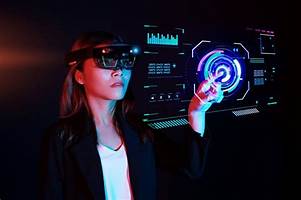Mobile Edge Computing (MEC) can aid is with real estate property browsing. MEC can provide a two-fold answer. Most buyers look at many residences and don’t make decisions without viewing them. Engaging Mobile Edge Computing (MEC) applications like augmented reality (AR) and virtual reality (VR) demonstrate strong opportunities to connect the external and simulated worlds, whether it’s putting a virtual couch in your sitting room as part of an interactive retail setting or allowing forecasting refurbishment steered by actual data as well as a layering of step-by-step graphic guidelines. As an element of synchronized and safe processes, the objective is to allow all sides to see what other sees. Combining smartphones and tablets, iPads, and smartwatches with virtual collaborative technologies redefine learning and allow product specialists to help from a distance (Ambrose and Shen, 2021). The goal is to make the distant assessment, replacement, and service of existing goods more efficient.
AR (augmented reality) and VR (virtual reality) are still considered specialized innovations which have yet to be widely accepted. A lot of it comes down to the issues that edge computing can now solve. Following the commercial release of 5G, AR (augmented reality) and VR (virtual reality) encompasses a slew of innovative application cases that, when combined by the edge of the network, will provide significant value to the sector and businesses. Applying virtual layers to live sights is what augmented reality is all about. It can be performed with a device, but in business, wearable technology is much more probably to be used. VR is total absorption in a digital perspective that requires the use of a set of glasses that block the user’s view of the world surrounding them (Gerasimova, 2019).
The real estate sector is likely to be transformed by this technology, which some belief would make property hunting more effective. It can help purchaser’s picture houses in progress and alleviate the stress of moving to the new location or purchasing from overseas.


What role does Edge and AR play in wooing customers in property hunting?
With AR (augmented reality), real estate reaches new heights in terms of providing consumers with a more efficient and interesting visual journey. Retailers may now transport them to any destination they like. Offer visitors a digital tour to relieve the stress of having to figure out road signs and building numbers while travelling. People will also have a complete image of the place after they have had the opportunities to explore it. Aside from the ease, it provides to property buyers, it also assists real estate brokers in other ways. Augmented Reality may also be used for branding and advertising (Lang and Sittler, 2012).
The following are some of the marketing aspects of augmented reality for property investment:
- More dynamic print catalogues and large boards are being developed.
- Spatial that really can help for-sale properties in real-time.
- Get an interactive function in the app so a potential buyer may reach out to the retailer right away.
- A larger audience
How to Use Virtual Reality in Property Hunting?
Virtual reality performs a vital part in the property market, from real estate development to housing developments. Let’s take a look at several ways that may use virtual reality property hunting:
Guided Visits: Property hunters, on the whole, compile a list of properties they wish to see and then go to the locations. Some residences are nearby, while some are on the periphery. As a result, planning a visit and narrowing down a list of prospective homes becomes physiologically and psychologically demanding. VR in the housing market efficiently overcomes all of these issues (Pleyers and Poncin, 2020).
Participatory Visits: Participatory visits are growing in popularity these days. The key difference between supervised and participatory trips would be that active trips allow property hunters to tap on the display and zoom in on certain areas of the property.
Virtual Staging: The term “virtual staging” refers to the technique of electronically furnishing vacant places. Simply defined, VS is a property investment internet marketing tactic that lets customers see themselves in completely furnished homes.
Communication: Modern residences and ultra-luxury homes now provide a variety of public utilities. While such products and services provide convenience, they may also be perplexing sometimes.
The Benefits of Edge-VR in Property Hunting:
- Time and money-saving.
- Creates an emotional bond.
- Profits increased.
- Experimentation is simple.
- Reach Out to a Larger Audience
What is the difference between VR and AR?
AR and VR are both disruptive technologies, they have some significant distinctions:
| Virtual Reality (VR) | Augmented Reality (AR) |
| Creates a fantastical world. | The real world is mingled with visuals or other factors. |
| A portable device or a head-mounted gadget is required. | Apps are available for smartphones, tablets, and PCs. |
| Objects cannot be added or changed by customers. | It’s simple to add, remove, or edit items. |
Conclusion for Edge and AR
Several businesses that are willing to embrace augmented reality are unable to do so due to limitations in their capacity to exchange data on the cloud. Companies may utilise graphical tools and applications like Zoom or Microsoft Exchange for normal communication, but they can’t use the same cloud-based solutions for critical organisational activities like learning, support, or technical access because of data security and privacy ownership issues. AR and VR are on the verge of allowing participants to take their immersive experience with others, which is something that most people like about property hunting. In terms of what’s feasible, both AR and VR are advancing at breakneck speed (Deaky and Parv, 2017). It’s nearly a perfect match for property hunting.
To know the benefits of Edge Computing please read:https://blogs.nife.io/differentiation-between-edge-computing-and-cloud-computing-a-study-ckuhq4w1q242191nqbrlsoj1z0/






